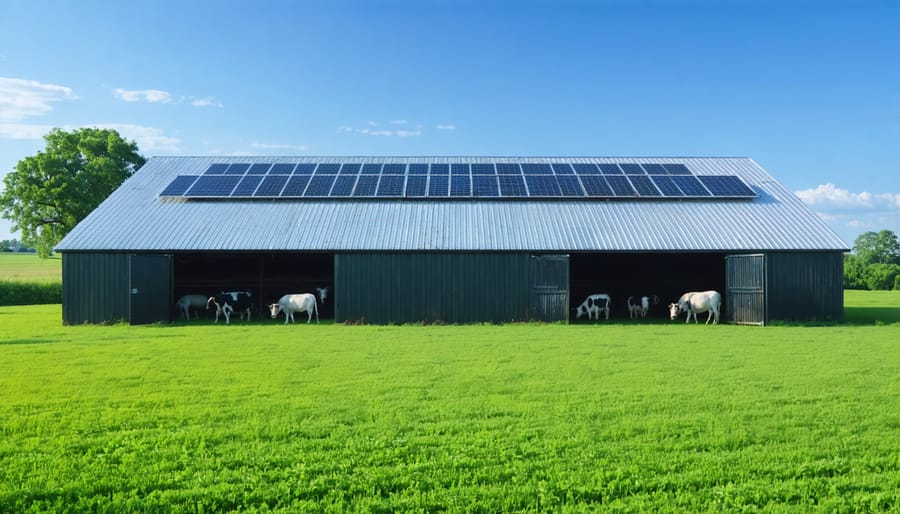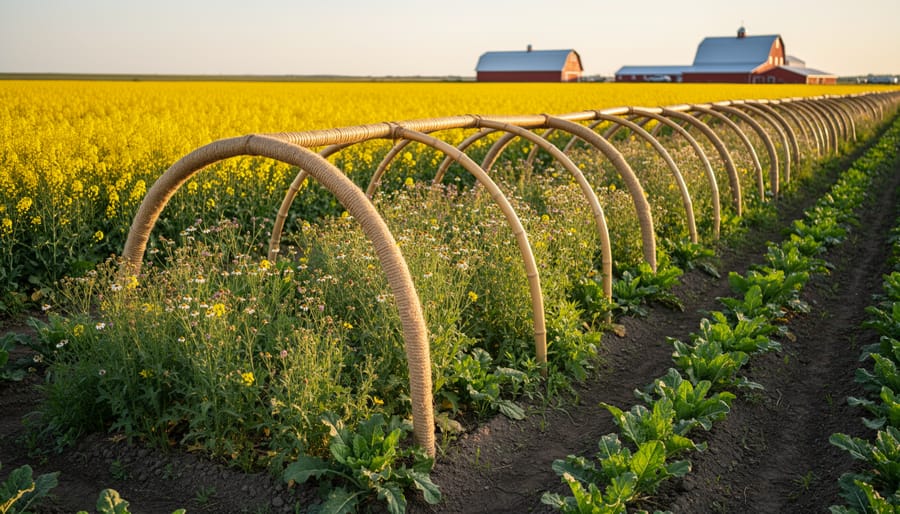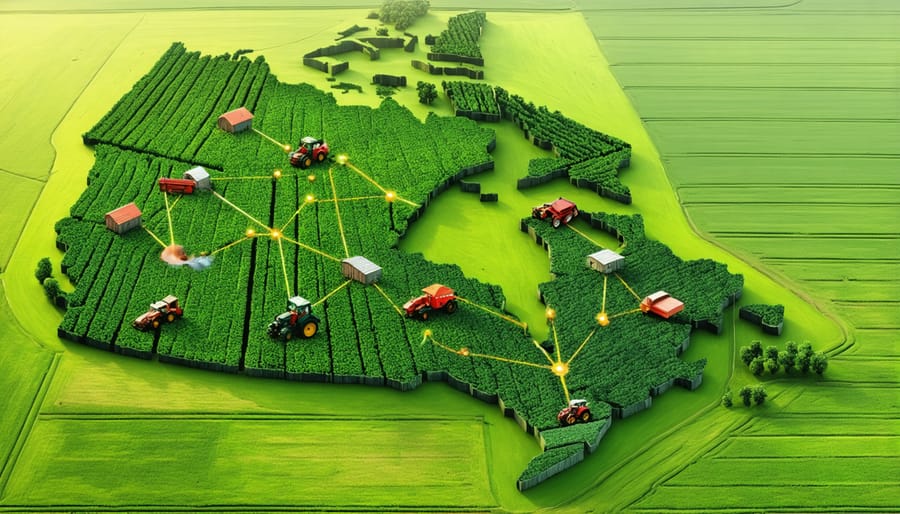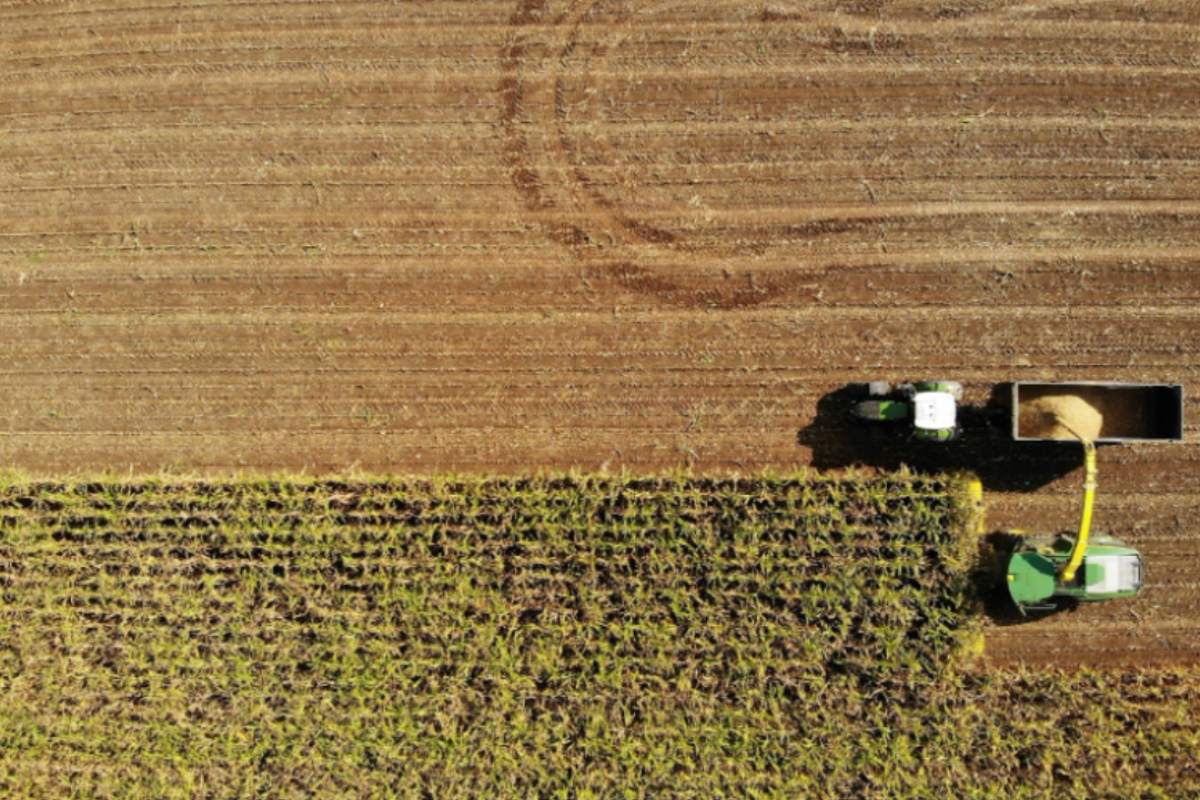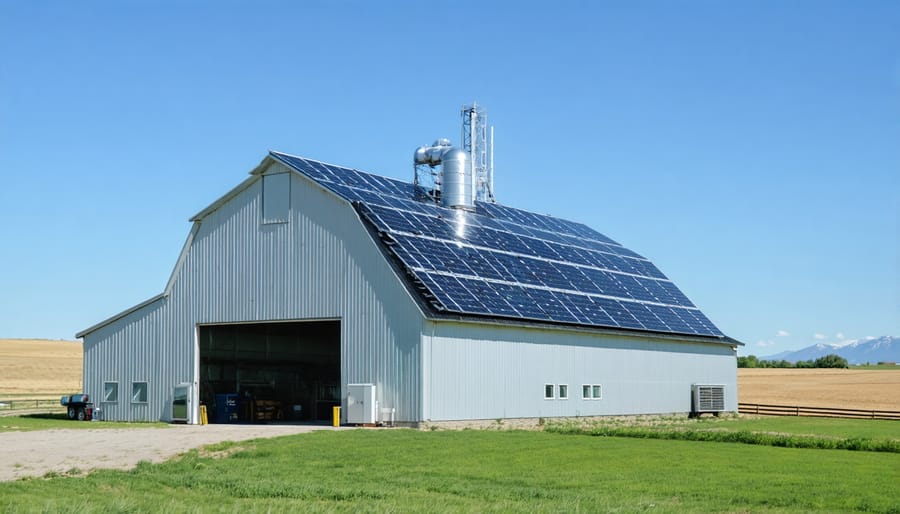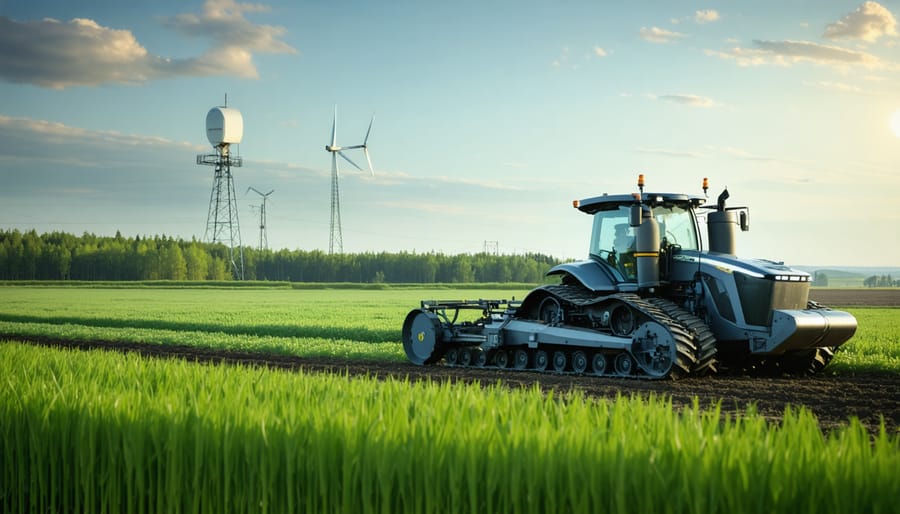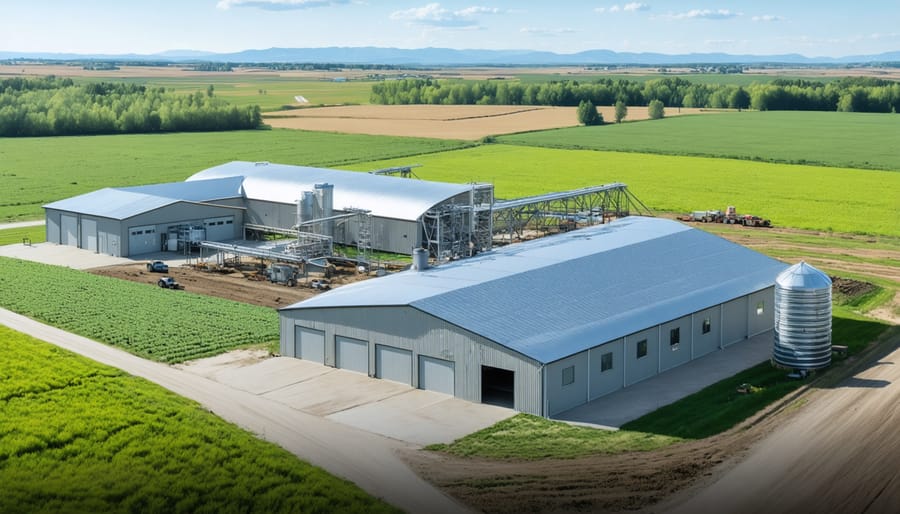USDA Climate Hubs serve as vital lifelines for Canadian and American farmers navigating the complexities of climate change in agriculture. These regional centers transform cutting-edge climate science into practical solutions for livestock producers, crop farmers, and agricultural professionals across North America. Operating through a network of ten strategic locations, the Hubs deliver localized climate adaptation strategies, risk management tools, and direct technical support to farming communities facing unprecedented weather challenges.
For Alberta farmers, the Northern Plains Climate Hub has become particularly relevant, offering region-specific guidance on drought-resistant livestock housing designs, energy-efficient ventilation systems, and extreme weather mitigation strategies. Through partnerships with Canadian agricultural institutions and local extension services, these Hubs create a cross-border knowledge exchange that strengthens agricultural resilience on both sides of the 49th parallel.
The Hubs’ collaborative approach combines traditional farming wisdom with innovative climate science, providing producers with actionable data, decision support tools, and peer-to-peer learning opportunities. This practical support helps farmers adapt their operations while maintaining productivity and profitability in an increasingly unpredictable climate.
How USDA Climate Hubs Support Canadian Livestock Farmers
Climate Risk Assessment Tools
Alberta farmers can access several practical assessment tools designed to evaluate and respond to climate-related risks in their operations. These tools integrate local weather data, soil conditions, and crop requirements to provide customized recommendations for climate adaptation strategies. The Climate Atlas of Canada offers detailed regional mapping that helps producers understand temperature and precipitation trends specific to their area.
The AgriRisk tool, particularly valuable for Alberta’s diverse agricultural landscape, enables farmers to assess potential impacts of extreme weather events on crop yields and livestock productivity. This interactive platform provides scenario-based planning options and suggests mitigation measures tailored to local conditions.
Producers can also utilize the Farm Climate Toolkit, which includes practical worksheets and checklists for evaluating infrastructure resilience, water management systems, and soil health indicators. This resource helps farmers identify vulnerabilities in their operations and develop targeted solutions.
These assessment tools are regularly updated with data from local weather stations and research institutions, ensuring that recommendations remain relevant to Alberta’s evolving climate patterns. Free training sessions are available through regional agricultural offices to help farmers maximize the benefits of these resources.
Research-Based Housing Solutions
Recent research has identified several proven housing adaptations that help protect livestock from extreme weather events. These solutions combine traditional barn wisdom with modern climate-resilient design principles, making them particularly relevant for Alberta’s variable climate conditions.
Key adaptations include enhanced ventilation systems that automatically adjust based on temperature and humidity levels, helping maintain optimal conditions year-round. Specially designed roof materials and insulation systems have shown to reduce indoor temperature fluctuations by up to 8°C during extreme weather events.
Many Alberta farmers have successfully implemented adjustable wind barriers and portable shade structures, which provide flexible protection against both winter storms and summer heat waves. These structures can be particularly effective when combined with strategic landscaping, such as windbreak trees and proper drainage systems.
Water management innovations, including elevated foundations and improved guttering systems, have proven essential in protecting livestock housing from flooding and excessive moisture. Studies show these adaptations can reduce flood-related structural damage by up to 60% while improving overall barn longevity.
For smaller operations, modular housing solutions offer cost-effective options that can be modified seasonally, providing adaptability without major infrastructure investments.
Climate-Smart Barn Design for Alberta’s Weather
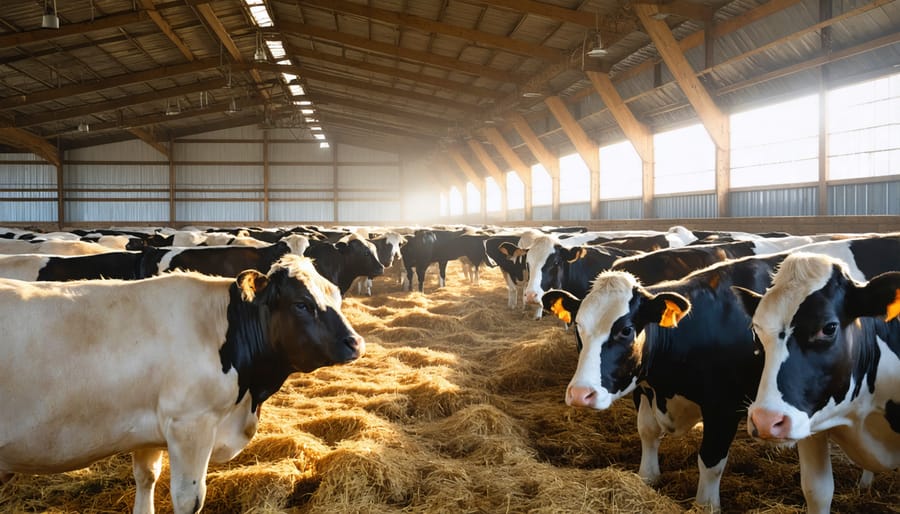
Ventilation Systems for Temperature Extremes
Modern ventilation systems play a crucial role in maintaining optimal conditions for livestock throughout Alberta’s extreme temperature swings. For winter months, positive-pressure ventilation systems help distribute warm air evenly while managing moisture levels. These systems use automated inlet controls to regulate airflow based on temperature and humidity sensors, preventing cold spots and condensation buildup.
During summer, negative-pressure ventilation becomes essential for heat management. High-volume exhaust fans, strategically placed along barn walls, create a cooling tunnel effect. Many Alberta farmers have found success with two-stage ventilation systems that automatically switch between winter and summer modes, reducing manual intervention and energy costs.
For example, the Thomson family farm near Red Deer implemented a hybrid ventilation system that combines natural and mechanical ventilation. Their setup includes adjustable sidewall curtains for natural airflow during moderate temperatures and mechanical systems for extreme conditions. This approach has reduced their energy consumption by 30% while maintaining optimal barn conditions year-round.
Smart controllers now allow farmers to monitor and adjust ventilation settings remotely through mobile apps. These systems can integrate with weather forecasts to proactively adjust settings before temperature extremes hit, ensuring consistent animal comfort and reducing stress on both livestock and equipment.
Several agricultural equipment suppliers in Alberta offer customized ventilation solutions that account for specific barn layouts, livestock types, and local climate patterns. Regular maintenance and seasonal system checks help ensure optimal performance during critical weather events.
Energy-Efficient Insulation Strategies
In Alberta’s challenging climate, implementing effective insulation strategies is crucial for maintaining optimal conditions in agricultural buildings while minimizing energy costs. Many farmers have found success with a combination of traditional and innovative energy-efficient farm solutions that work particularly well in our region.
Spray foam insulation has proven especially effective for livestock buildings, offering both excellent R-value and air-sealing properties. Local farmers report up to 30% reduction in heating costs after proper application. For more budget-conscious options, blown-in cellulose insulation made from recycled paper products provides good thermal resistance at a lower cost point, typically achieving R-values of 3.5 per 25mm of thickness.
Weather stripping and door seals are often overlooked but crucial components. Simple improvements like installing rubber gaskets around doors and weather-stripping windows can prevent significant heat loss during winter months. Several Alberta farmers have successfully implemented these measures alongside strategic placement of windbreaks, which can reduce wind chill effects on buildings by up to 50%.
Double-wall construction techniques, while requiring more initial investment, have shown impressive results in new builds, with some operations reporting heating cost reductions of up to 40%. When combined with proper ventilation systems, these insulation strategies help maintain consistent temperatures year-round while reducing overall energy consumption.
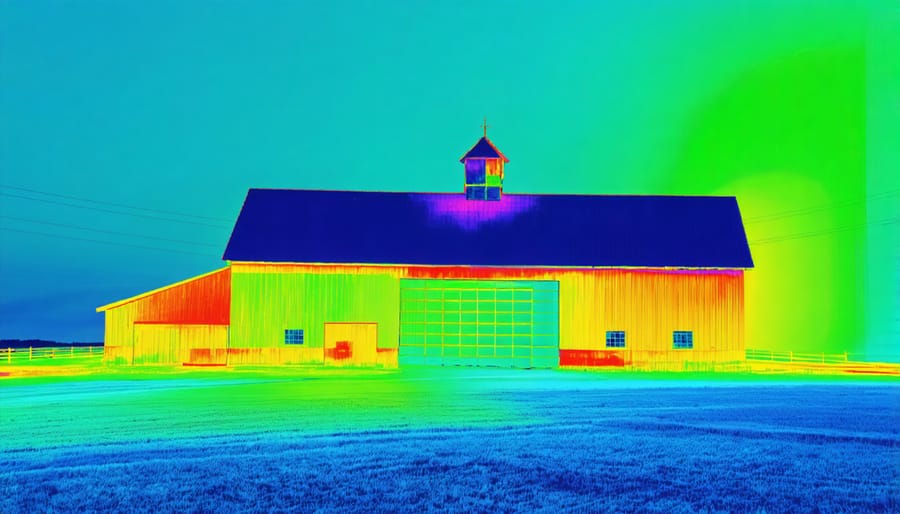
Water Management Systems
Water management has become increasingly critical for Alberta farmers facing climate variability. The USDA Climate Hubs have developed comprehensive solutions that Canadian producers can adapt for their operations, particularly focusing on innovative water management systems that optimize both conservation and freeze protection.
Key strategies include implementing soil moisture monitoring sensors, which help farmers make informed irrigation decisions while conserving water resources. These systems can be integrated with automated controls that adjust water flow based on real-time weather data and soil conditions, reducing waste and protecting crops during extreme temperature fluctuations.
For livestock operations, frost-free waterers and geothermal water systems have proven effective in preventing freezing during harsh Alberta winters. These solutions utilize underground heat to maintain water temperatures above freezing, ensuring consistent access for animals while minimizing energy consumption.
Many Alberta farmers have successfully implemented water recycling systems that capture and filter runoff for reuse in irrigation. These closed-loop systems not only conserve water but also help manage nutrient levels in the soil, creating more resilient agricultural operations.
Local agricultural extension services offer support in designing and implementing these water management solutions, often providing access to funding programs that can help offset installation costs. Regular system maintenance and monitoring ensure optimal performance throughout the growing season.
Alberta Success Stories
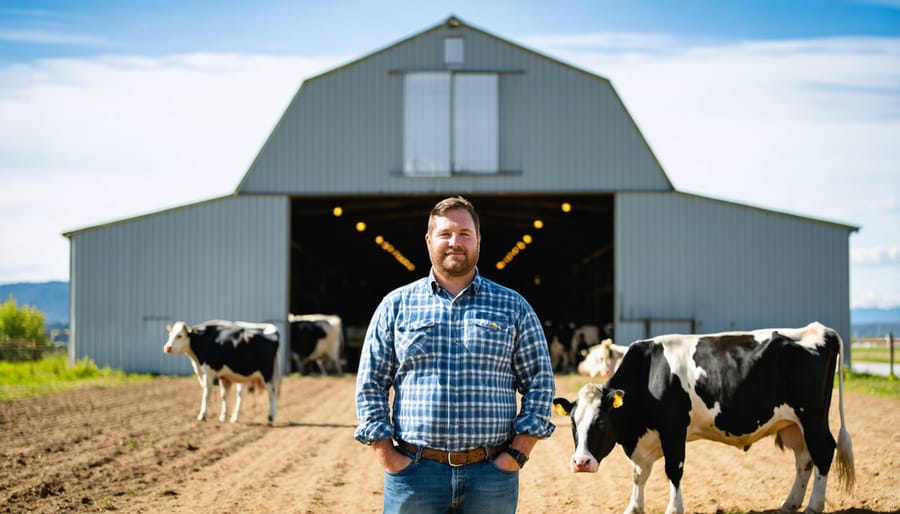
Dairy Farm Transformation
The Johnson Family Dairy in southern Alberta stands as a compelling example of successful climate adaptation in action. After experiencing three consecutive years of heat stress affecting their 200-head Holstein herd, the Johnsons implemented a comprehensive climate resilience strategy inspired by USDA Climate Hubs research.
Their transformation began with the installation of automated ventilation systems and high-volume, low-speed fans throughout their barn facilities. Strategic roof modifications, including reflective coating and improved insulation, helped reduce indoor temperatures by up to 8°C during peak summer months. The family also invested in water-efficient misters that activate when temperatures exceed 25°C.
Perhaps most notably, the Johnsons redesigned their pasture management system, incorporating silvopasture techniques by planting rows of native trees to provide natural shade. They established rotational grazing patterns that allow cattle to access shaded areas during the hottest parts of the day while maintaining soil health.
The results have been remarkable. Milk production has stabilized, showing a 15% improvement during summer months compared to pre-adaptation levels. Heat stress incidents have decreased by 70%, and overall herd health indicators have improved significantly. The Johnsons report an annual energy cost reduction of 30%, making their initial investment increasingly cost-effective.
Their success has inspired neighbouring farms to implement similar adaptations, creating a ripple effect of climate-smart dairy practices throughout the region.
Cattle Ranch Innovation
The Thompson family’s cattle ranch in southern Alberta demonstrates how climate-smart housing innovations can significantly improve livestock operations. After experiencing several severe weather events that impacted their cattle’s health and productivity, the Thompsons implemented a comprehensive facility upgrade inspired by USDA Climate Hubs research.
Their most successful improvement was the installation of a modified barn design featuring adjustable ventilation panels and strategic wind barriers. The new structure maintains optimal temperatures of 5-15°C during winter months while reducing summer heat stress through improved air circulation. This design has decreased respiratory issues in their herd by 30% and improved feed conversion rates.
The facility also incorporates a rainwater harvesting system that collects approximately 50,000 litres annually, reducing their reliance on groundwater. Solar-powered fans and LED lighting further decrease energy costs by 40% compared to their previous setup.
“We’ve seen a remarkable improvement in our cattle’s comfort and health,” says Sarah Thompson. “The investment has paid for itself through reduced veterinary costs and improved weight gain in our herd.”
The ranch’s success has inspired neighbouring operations to adopt similar innovations, creating a network of climate-resilient cattle facilities across the region. The Thompsons regularly host farm tours to share their experiences and help other ranchers implement these proven solutions.
Implementation Resources and Support
Financial Assistance Programs
While the USDA Climate Hubs primarily serve American farmers, Canadian producers can access similar climate-smart funding through Agriculture and Agri-Food Canada (AAFC) programs. The Agricultural Clean Technology Program offers funding up to $2 million for projects that reduce emissions and boost climate resilience. Alberta farmers can apply for the Canadian Agricultural Partnership (CAP) grants, which provide cost-sharing opportunities for sustainable farming practices.
Local producers should consider the Environmental Stewardship and Climate Change Producer Program, offering up to $100,000 for implementing climate-adaptive solutions. The application process typically requires a detailed project proposal, cost estimates, and timeline documentation. Farm operators can receive guidance through their regional AAFC office or the Alberta Agriculture and Forestry department.
Additional support is available through the Farm Credit Canada’s sustainability initiatives and the Agricultural Climate Solutions program, which funds on-farm practices that sequester carbon and reduce emissions. These programs often accept applications year-round, but early submission is recommended as funding is allocated on a first-come, first-served basis. Contact your local agricultural extension office for application assistance and deadline information.
Technical Support Networks
The USDA Climate Hubs maintain robust technical support networks that connect farmers and agricultural professionals with expert assistance and valuable peer resources. These networks feature regional specialists who understand local climate challenges and can provide tailored guidance for Canadian producers adapting similar strategies.
Farmers in Alberta can benefit from these established networks through cross-border knowledge sharing and collaborative partnerships. The hubs facilitate regular online forums, workshops, and webinars where producers can engage with climate scientists, agricultural extension specialists, and fellow farmers facing similar challenges.
A particularly valuable aspect is the peer-to-peer learning opportunities, where farmers can connect with others who have successfully implemented climate-smart practices. These connections often lead to ongoing mentorship relationships and the sharing of practical, field-tested solutions.
The technical support framework includes dedicated hotlines, email support systems, and regional coordinators who can direct farmers to relevant resources and expertise. Regular training sessions keep agricultural professionals updated on the latest climate-smart technologies and adaptation strategies, ensuring that knowledge flows effectively through the network to benefit farming communities on both sides of the border.
As we’ve explored throughout this article, USDA Climate Hubs offer valuable insights and strategies that Canadian farmers can adapt to strengthen their agricultural operations. While these resources are U.S.-based, the principles and approaches can be effectively translated to Alberta’s unique climate challenges.
The key takeaway is that proactive climate adaptation is both necessary and achievable. By implementing strategic facility modifications, utilizing climate-smart technologies, and participating in knowledge-sharing networks, Alberta farmers can build more resilient operations. The success stories we’ve shared from both sides of the border demonstrate that small, incremental changes can lead to significant improvements in farm sustainability and productivity.
Moving forward, we encourage Alberta farmers to:
– Connect with local agricultural extension services
– Join regional farmer-to-farmer networks
– Document and share their climate adaptation experiences
– Stay informed about emerging climate-smart technologies
– Participate in agricultural research initiatives
Remember that adaptation is an ongoing process, not a one-time solution. Start with the most pressing needs on your farm and gradually implement changes as resources allow. The agricultural community in Alberta is strong and collaborative – by working together and sharing knowledge, we can build a more resilient farming future.
For additional support, reach out to your local agricultural advisory services or connect with fellow farmers who have already begun their climate adaptation journey. The path to climate resilience starts with a single step, and every action counts toward securing our agricultural heritage for future generations.

